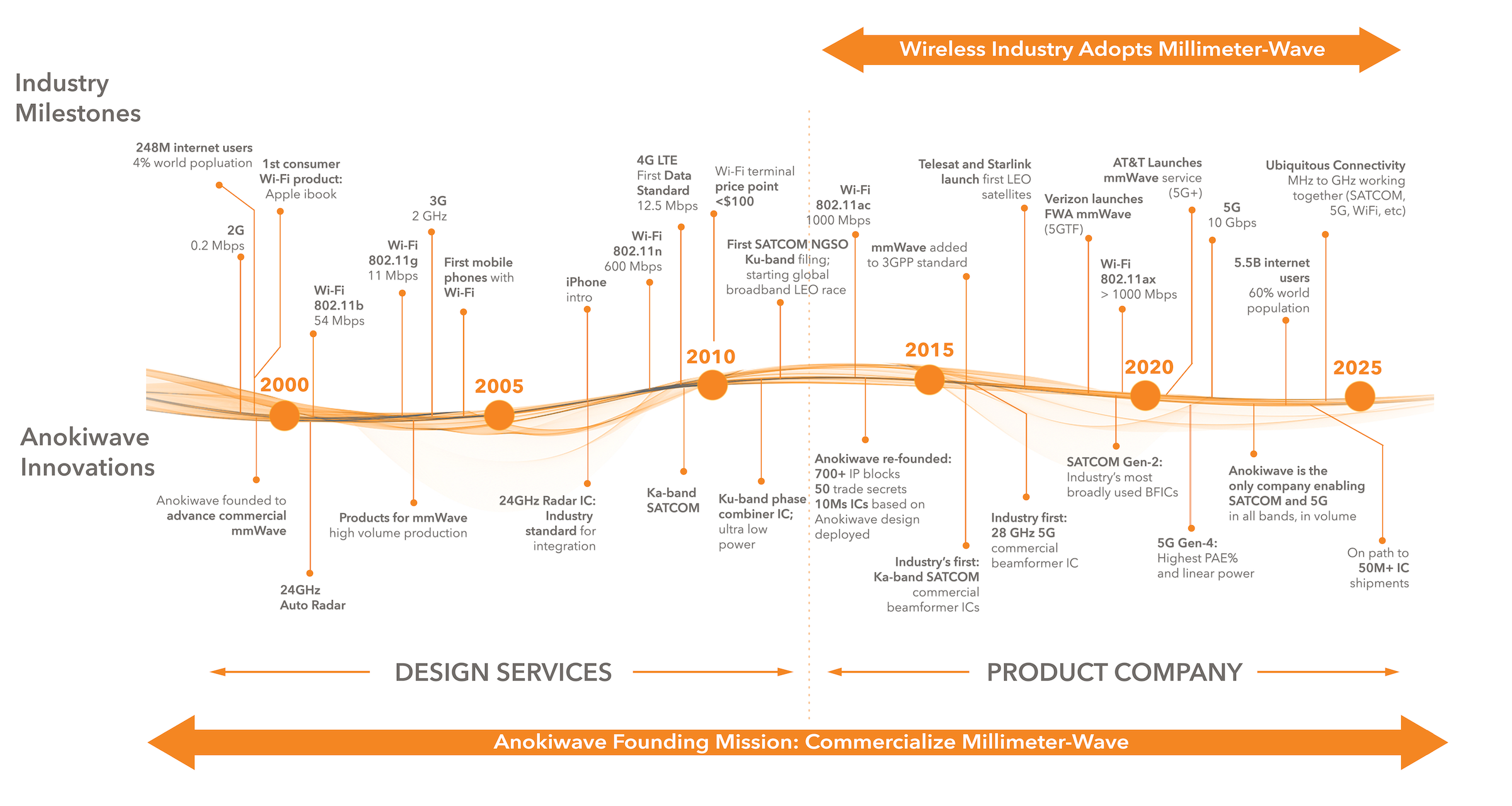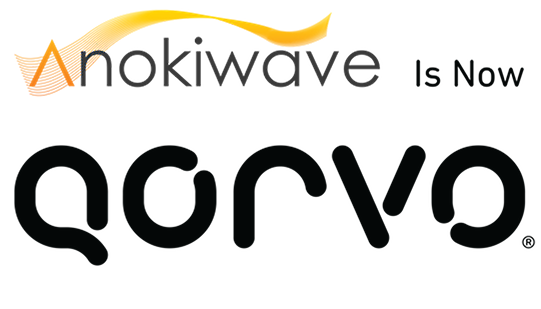Leading millimeter-wave | every year since 1999
 |
Amy Corman |
|---|---|
|
|
|


While the market focused on the wireless technology of the time, Anokiwave has always looked to the future and saw mmWave.
As Anokiwave enters its 25th year of business, we are taking time to reflect on our founding principles that made this company successful and the amazing pace of technology advancements, both in the industry and at Anokiwave.
In this blog, we look at the antenna terminal performance considerations including thermal, architecture, and cost and Anokiwave's solutions
Year 1999: Anokiwave Founding | Wired Communications
Think about your life in 1999 – we connected to the internet through a dialup modem with data rates of 56 kbps; consumers never considered transferring data through the internet since it would require 60 hours to download 1GB of data.
Initial Wi-Fi standards, 802.11b, operating at 2.4 GHz with data rates of 54 Mbps and 22 MHz of bandwidth, were just introduced and adopted by Apple in 1999 for their iBook laptops representing the first consumer product to offer Wi-Fi connectivity.
There were only 248 million internet users (4% of world population) so connecting to the internet wirelessly was not even a need. Your phone was likely a Motorola flip phone or a Nokia 3210 operating on a 2G network operating at 900 MHz with data rates of 0.2 Mbps and 200 kHz of bandwidth with only voice or text capability.
Amazon, started in 1994 as a book company, registered record sales in 1999 and Jeff Bezos was Time Magazine Person of the Year.
A small company, Anokiwave, started by Deepti and Nitin Jain with a name that was inspired by both the Hindi word “Anokhi” meaning “extraordinary” and “unique” and “wave”, representing a mmWave technology focus, started in a room in the founder’s family home with the goal to revolutionize mmWave communications through innovation, knowledge, and technical vision.
In this blog, we look at the antenna terminal performance considerations including thermal, architecture, and cost and Anokiwave's solutions
Today: Anokiwave is a mmWave Leader | Industry demands Ubiquitous Connectivity
The methods of communication have changed dramatically since 1999. Innovations, new technologies, and companies like iPod, Google, Facebook, iPhone, Twitter, YouTube, GPS, TiVo, Uber, IPv6, LTE, inflight entertainment, livestreaming, Starlink, autonomous cars - just to name a few, have changed the ways in which we behave and communicate today. WiFi6 802.11ax is established with speeds just over 1Gbps and 160 MHz channel bandwidth. Most wireless devices use SATCOM or 5G communications that approach 10 Gbps data rates and 1000 MHz channel bandwidths.
The on-line bookseller, Amazon, now is a trillion-dollar company that touches consumers every day through its services and is even launching LEO satellites soon.
The greatly increased wireless data rates mean that 5G networks are becoming more usable even than wired networks and continue to grow in capability to satisfy the insatiable demand for data that is impacting how fixed, mobile, and SATCOM networks deliver data. Companies can now consider the business implications of having super-fast and stable internet access anywhere. But more is to come, the increased bandwidths, provided by mmWave frequencies, will enable machines, robots, and autonomous vehicles to collect and transfer more data than ever, leading to advances in Internet of Things (IoT), new concepts like augmented and virtual reality, and smart machinery.
Anokiwave saw the next era of connectivity emerging and invested in it. Through our early work with A&D customers who were already using phased array antennas for communications and were replacing expensive GaAs technologies with Silicon for the core IC functions, we predicted that trend would carry to the commercial market. We believed that commercial communications devices utilizing phased array antennas at mmWave frequencies using highly integrated silicon ICs, coupled with advanced system architectures, would change the dynamics of the industry.
We released the industry’s first SATCOM and 5G beamformer ICs. Anokiwave led the industry by choosing silicon CMOS, that supports high levels of integration and functionality, as the baseline choice to realize a mmWave front-end to lower the radio cost. Our early generation ICs have been implemented in virtually all the operational systems, proving the technical viability of mmWave SATCOM and 5G networks.
We are now designing our fourth and fifth generations of these ICs and are on a path to ship more than 50 million ICs with a 90% cost reduction that will enable mmWave 5G to reach similar cost points to WiFi. Anokiwave’s goal is to enable customers to build the most cost-effective arrays by improving the total cost of ownership and has adopted the phrase “Handset Technology for Infrastructure™” as our mmWave SATCOM and 5G business model.
At Anokiwave, we see multiple commercial mmWave systems in operation; we are enabling the fixed, mobile, and SATCOM markets with millions of ICs deployed in working systems. As the focus of the industry shifts to ways that proliferate these systems into regions and countries where it can create impactful economic, societal, and environmental benefits, Anokiwave will continue to enable that industry focus.
For additional information on our SATCOM of 5G products, tools, and resources, please visit our SATCOM or 5G pages to learn more.


